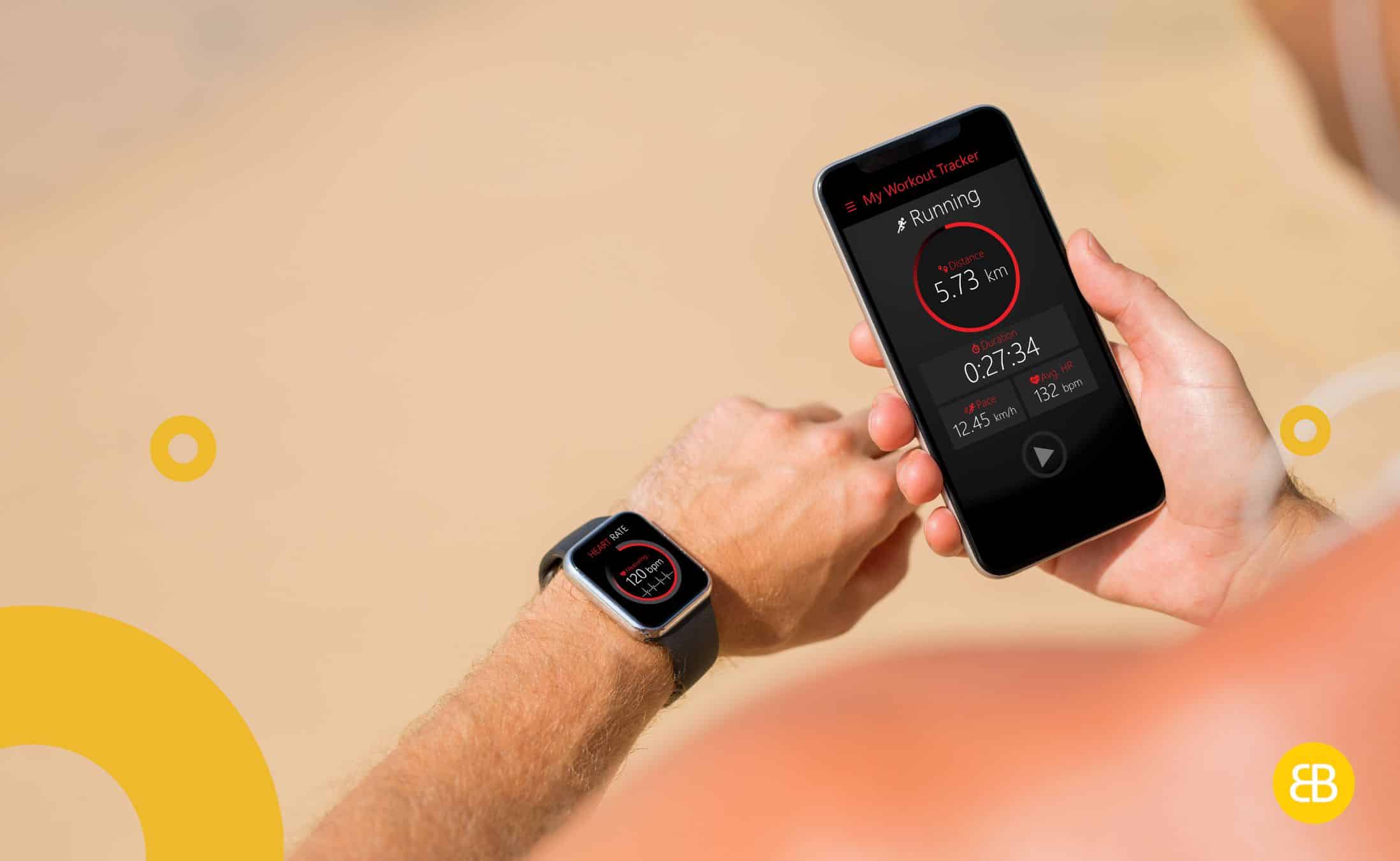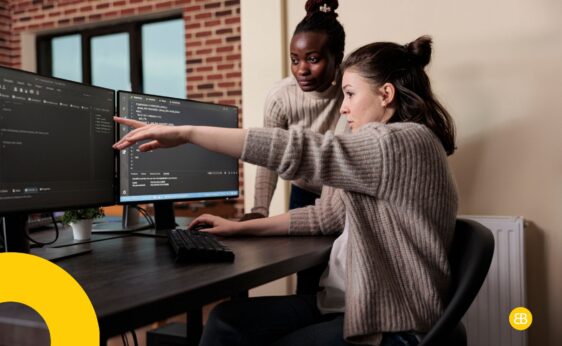Wearable Apps: The Future of Mobile Applications

19 Jan 2021
ContentBinisha Sharma
Table of Contents
Worldwide shipments of smartwatches were up 12% at the end of the first quarter of 2020 a trend towards widescale full adoption of wearable devices. Wearable apps for these devices are the buzz of the app development industry.
Advances in wearable technology are giving away to new concepts of how information is presented to us. Innovation fueled by a more technology-friendly generation of young people is changing how we interact with our applications.
In this article, we will take a closer look at how wearable technology is affecting how we develop apps for today’s market. We will explore how these wearable apps are helping us to see, hear, and understand our digital worlds at a glance – now and into the future. Read on for insights into wearable apps now and into the future.
The Future of Wearable Technology
The future is a smarter version of itself with everyday items becoming devices in and of themselves with more and more functionality. The IoT is exploding on the tech scene with 1 million devices an hour to come online in 2021.
The mobile app development industry is trending towards connecting more devices to our lives. We are using applications to collect more useable data to make our lives increasingly more convenient. The future is full of everything from coffee mugs that display the temperature of your coffee and marquee the news to wristwatches that do everything a smartphone does only smaller.
Machine learning algorithms are creating networks of devices with incredible amounts of big data. These AI-enabled applications are finding their way on more wrists, necks, and eyes every day. Wearable devices will continue to become a digital extension of our traditional physical selves. Humanity is moving towards a more symbiotic relationship with technology.
This monumental revolution is happening now. A combination of technology trends is all converging in our lifetimes to an exciting future where anything is possible.
Ever Shrinking Yet Powerful Computers
The hardware needed to run powerful wearable mobile apps, most of it anyway, is already existing technology. Incredibly small yet powerful computers are being manufactured by IBM literally for a dime apiece.
In 2018, IBM announced it had created the world’s smallest computer that packs the same computing power of a 1996 home PC. The computer runs on light and communicates through RFID.
Consider this, why if you could put a computer the size of a grain of salt in a product for only 10 cents – why wouldn’t you? Why indeed.
Smaller Yet Clearer Flexible Screens
Display Technology has seen incredible advances over the last ten years. Higher resolutions mean smaller screens can be used without sacrificing high definition. Higher pixel densities are great for VR mobile applications combating the “screen door effect” that commonly causes nausea.
The groundwork for transparent high-resolution screens is already being laid. Tech giant Samsung recently applied for patents detailing the technology required to manufacture a transparent display smartphone.
It is only a matter of time before the technology is fully adopted. Imagine a future where full visors allow us to interact with our devices in our field of vision instantly and always at our command.
Samsung, Sony, and even Microsoft have prototypes in R&D of smartwatches that have flexible screens that wrap around the wrist. We can be sure that wearable mobile apps of the future will take advantage of scrollable wrap-around screens.
Wider Adoption of Wearable Devices
The global sale of smartwatches in 2024 is expected to reach 108.91 million units. This is over double the units sold in 2018. LTE mobile network connected smartwatches and other devices fueled the market.
Not long ago the prevailing attitude seemed to be – why do I need a watch when my phone tells me the time? These days people are asking themselves – why do I need to look at my phone a hundred times a day when I can just use my watch most of the time if not all the time?
Development of Wearable Apps
With each step in hardware advances, wearable apps are becoming more powerful and user friendly. Companies that rely on mobile apps for their customer interactions now include a wearable version of their mobile apps.
All the major players in the mobile device industry are releasing smartwatches in regular series. The industry leaders in the wearable OS arena are Google’s WearOS, Apple’s WatchOS, and Samsungs Linex based Tizen OS.
Andriod Wear Applications
Andriod Wear (now Wear OS) was released in 2014 and was one of the first major players on the smartwatch market. Android Wearable Apps running on Wear OS work with phones running on Andriod 6.0 or newer and iPhones running iOS 10.0 or later versions.
There are many smartwatch companies that run Wear OS on their devices for consumers to choose from. App developers have been adding to an ever-growing selection of free and paid apps available in google’s play store. Android’s wide selection of apps makes choosing Wear OS as a development platform an attractive solution.
Google recently announced that this fall in 2020 they will release a new version of Wear OS that will run apps up to 20% faster. This is good news for developers struggling to create apps that run well on less powerful chipsets used in wearable devices.
Samsung Gear Applications
Samsung Gear and Samsung Fit run on their proprietary Tizen OS. Tizen Wearable apps are compatible with most major brands of mobile phones on the market. Samsung apps work best when paired with Samsung phones but the OS does usually play nice with other android devices.
Apple Watch Applications
The Apple Watch is of course popular with Apple fans and its wearable apps consistently receive rave reviews from tech experts. Following their long-standing tradition of sandboxing, Apple Watches will refuse to pair with non-Apple devices. It is necessary to develop a separate app for iPhone fans or miss out on a large part of the market.
Our team of professional app designers is well versed in Apple WatchOS app development and would be happy to speak with you about building your next app for Apple Watch.
Popular Wearable App Features
Many of the wearable apps that are installed most often are versions of the same apps already popular on the smartphone app market. Other apps like fitness and health monitoring apps are born of wearable tech. As app developers, we at EB Pearls are constantly monitoring trends in the market as they develop.
Health and Wellness Monitoring
The fastest-growing sector of wearable apps is fitness tracking apps. Over 3,000 health and fitness professionals expressed in a recent survey that they believed the coming year to be the biggest year yet for health-related wearable applications.
There are wearable apps on the market designed to:
- monitor vital signs such as blood pressure during workouts
- teach, lead, and guide workouts (Virtual Coaching)
- analyze athletic performance and recommend next steps
- track training progress and encourage greater performance in sports
- weight loss and bodyweight training
- mental health and sleep monitoring
Personal and Professional Communications
The usual suspects in social media such as Facebook, Twitter, Instagram, and Viber are all high on the most downloaded wearable apps. There are also dozens of other social media channels you may never have heard of emerging specifically designed to work with wearable devices.
It is not always possible to check incoming messages on a mobile phone. With wearable technology, our instant messages, texts, reminders, alerts, and so forth are only a glance at our watch away.
Navigation and Trip Planning
Apps that assist us in getting around when we are away from home are particularly useful to be hands-free and wearable. Cyclists are able to use GPS tracking apps to find the best routes. They can get directions to their destinations without having to take their hands off the handlebars.
Personal and Professional Organizers
In addition to the usual calendar, notes, and reminder apps, digital assistant apps that use state of the art machine learning algorithms are quickly becoming the next big trend in wearable apps. After all, what busy adult man or woman wouldn’t want their own personal assistant available 24/7 on their wearable device?
Advances in AI are pushing the boundaries. Wearable apps are able to learn our individual needs, concerns, desires, and use this information to predict what we will need even before we do. Any app that is used to organize consumers ever more complicated and busy lives are going to be well received in the app market.
Inspiration leads to Innovation
When planning your app we encourage you to think outside the box and imagine what you would like to see your app do for your customers or clients. Don’t diddle daddle your thoughts on what you know apps can do, but use the popular app trends to inspire you to create something new and great. If it is in the realm of possibility our app development team can and will make it happen.
Always on the Cutting Edge
Wearable devices and the applications that run on them are a new and quickly growing tech market. Interested in getting in on the ground floor of this shift towards wearable apps?
EB Pearls prides itself on staying informed of mobile app developments. We are standing by to join forces with you to develop your app ideas into a profitable project for your company. Contact us today and we can discuss your vision and how we can help make it a reality.
See more articles like this
See all“We’re very happy with the results of EB Pearls’ work. Since its launch, the app has had over 7,000 downloads, with around 6,000 users completing the signup process in the first 6 weeks. ”

— Founder at Intro Dating





